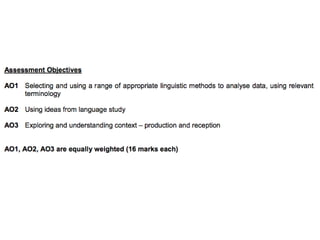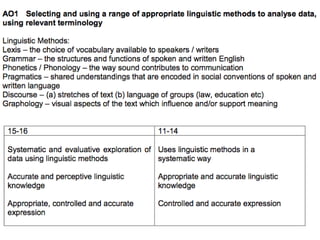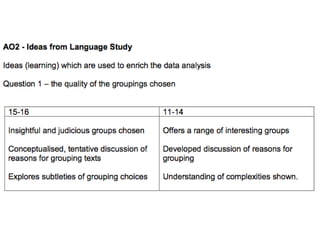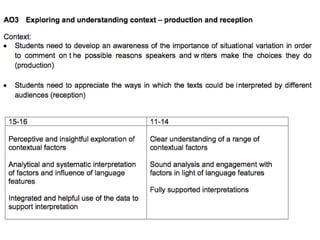1 of 5





Ad
Recommended
HŲ»ß╗ÜNG Dß║¬N Lß║¼P Kß║Š HOß║ĀCH PH├üT TRIß╗éN ─Éß╗ŖA PHŲ»ŲĀNG 5 N─éM V├Ć H├ĆNG N─éM THEO PHŲ»ŲĀNG P...
HŲ»ß╗ÜNG Dß║¬N Lß║¼P Kß║Š HOß║ĀCH PH├üT TRIß╗éN ─Éß╗ŖA PHŲ»ŲĀNG 5 N─éM V├Ć H├ĆNG N─éM THEO PHŲ»ŲĀNG P...Tin Xuan
╠²
T├Āi liß╗ću hŲ░ß╗øng dß║½n lß║Łp kß║┐ hoß║Īch ph├Īt triß╗ān ─æß╗ŗa phŲ░ŲĪng 5 n─ām v├Ā h├Āng n─ām theo phŲ░ŲĪng ph├Īp mß╗øi tß║Łp trung v├Āo cß║Żi c├Īch quy tr├¼nh kß║┐ hoß║Īch h├│a tß║Īi Viß╗ćt Nam nhß║▒m ─æ├Īp ß╗®ng nhu cß║¦u ph├Īt triß╗ān trong bß╗æi cß║Żnh kinh tß║┐ thß╗ŗ trŲ░ß╗Øng v├Ā gia nhß║Łp WTO. N├│ cung cß║źp kiß║┐n thß╗®c v├Ā c├┤ng cß╗ź ─æß╗ā lß║Łp kß║┐ hoß║Īch dß╗▒a tr├¬n kß║┐t quß║Ż, c├│ sß╗▒ tham gia cß╗¦a c├Īc b├¬n li├¬n quan, ─æß║Ęc biß╗ćt trong l─®nh vß╗▒c ch─ām s├│c trß║╗ em. T├Āi liß╗ću hŲ░ß╗øng dß║½n c┼®ng cho thß║źy tß║¦m quan trß╗Źng cß╗¦a viß╗ćc thß╗æng nhß║źt trong triß╗ān khai c├Īc phŲ░ŲĪng ph├Īp v├Ā c├┤ng cß╗ź lß║Łp kß║┐ hoß║Īch tß╗½ trung Ų░ŲĪng ─æß║┐n ─æß╗ŗa phŲ░ŲĪng.Sentences
Sentencesjkmurton
╠²
This document discusses the four sentence types - declarative, interrogative, imperative, and exclamatory. It provides examples of what types of sentences would be found in different texts like instruction manuals, advertisements, conversations, and more. It then instructs the reader on an activity to identify sentence types and how they relate to audience. Finally, it outlines the major and minor types of sentences and provides examples.Register
Registerjkmurton
╠²
This document discusses formality and register in language. It explains that language varies depending on factors like topic, relationship between speakers, and whether the language is written or spoken. When analyzing differences in formality/register, one looks at vocabulary choices, sentence complexity, pronunciation, and contractions. Register is important to consider when analyzing texts and when writing one's own texts. The document provides examples of levels of formality from formal to informal and sample text types where each level may be used. It prompts analyzing the formality of sample texts and comparing their levels of formality.The language of humour
The language of humourjkmurton
╠²
I'm afraid I don't have time to discuss
your fantasies. Let's get back to business.
(STOPPARD'S "REAL INSPECTOR HOUND" p39)Denotation connotation
Denotation connotationjkmurton
╠²
The document discusses different types of meaning in language including literal denotation versus implied connotation, and how context and pragmatics contribute to meaning. It provides examples of phrases that can have multiple meanings depending on context ("He was cool", "She was on fire") and examples of how word play and homonyms can convey a message humorously.Pragmatics
Pragmaticsjkmurton
╠²
The document discusses denotation and connotation of words. Denotation refers to the literal meaning of a word, while connotation refers to the emotional associations that a word evokes. For example, while "woman" and "chick" both denote an adult female, "chick" has somewhat negative connotations compared to the neutral connotation of "woman." Pragmatics is then defined as the study of how context, communication principles, and speaker goals influence how something is expressed and interpreted.Intro to lexis
Intro to lexisjkmurton
╠²
A lexicon is the body of words that make up a language. Lexicology is the study of words, their meanings, uses, and relationships. A lexicographer writes dictionaries by determining what words and concepts to include from a language's lexicon. A lexeme is the basic unit of lexical meaning, such as a word and its inflected forms that share the same core meaning. Determining what to include in a dictionary considers factors like parts of speech, regional terms, slang, abbreviations, proper nouns, and more.Lexis1
Lexis1jkmurton
╠²
1) The document discusses different aspects of word structure and formation including compounds, blends, morphology, prefixes, suffixes, and homophones.
2) It provides examples of compound words, blended words like "electrocute" and "fortnight", and discusses morphology and morphemes.
3) Prefixes and suffixes are discussed as affixes that can change the word class, and examples of different affixes are given like "able" and "ly". Homophones, homonyms, and other lexical relationships are also defined.Words and meaning
Words and meaningjkmurton
╠²
The document discusses ambiguity in language. It provides examples of phrases that function as single words like "double yellow lines" and examples where the intended meaning is unclear, like jokes that rely on multiple interpretations of words. Lexical ambiguity occurs when the intended meaning of a word is unclear from the context. Headlines are given that contain ambiguous words that could have multiple meanings. Businesses sometimes use ambiguous names deliberately to attract attention. The document asks the reader to come up with an ambiguous name for a shop they may open.Verbs
Verbsjkmurton
╠²
Verbs can be main verbs or auxiliary verbs. Main verbs express the main action in a sentence while auxiliary verbs help support the main verb. There are two types of auxiliary verbs: primary verbs like be, have, and do, and modal verbs like can, will, and may. Modal verbs are used to influence meaning and are always used with another verb. Prepositions
Prepositionsjkmurton
╠²
Prepositions describe relationships between words in a sentence and are often used in prepositional phrases. Prepositions like "in", "between", and "on" are difficult to define alone and are usually explained through gestures. Prepositional phrases consist of a preposition followed by a determiner, noun, or pronoun, and function as adjectives or adverbs to indicate location, time, or conditions. The document provides many examples of how prepositions can be used in relation to a professor's desk, both physically and temporally. While some view ending a sentence with a preposition as improper grammar, this rule is not universally agreed upon.Nouns pronouns
Nouns pronounsjkmurton
╠²
The document discusses nouns and pronouns. It defines nouns as words that name people, places, things, qualities or actions. Nouns can be proper, common, count, noncount, concrete or abstract. Pronouns are words that take the place of nouns like I, you, he, she, it, we and they. The document provides examples of different types of pronouns and their uses in sentences.Conjunctions
Conjunctionsjkmurton
╠²
This document discusses different types of conjunctions that join ideas together in sentences. It describes coordinating conjunctions like and, but, or, nor, for, so, and yet. It also discusses subordinating conjunctions that indicate time, reason, concession, place, condition, or manner such as after, because, although, where, if, as if, and until. Examples are provided for each type of conjunction. The document also mentions that relative pronouns and adjectives can be used to join ideas by creating adjective or noun clauses.Amazing adjectives
Amazing adjectivesjkmurton
╠²
This document provides information and advice about using adjectives effectively. It defines what an adjective is and its purpose of modifying nouns and pronouns. Tips are given for creative writing, such as using fewer but well-chosen adjectives and showing descriptions through verbs and nouns instead of overused adjectives like "interesting" and "beautiful". Comparative and superlative forms of adjectives and some irregular examples are also outlined.How to categorise
How to categorisejkmurton
╠²
This document provides guidance on how to answer Question 1 of a language exam. Students are instructed to read six texts (A-F) and group them in various ways, providing linguistic reasons for each grouping. They should consider whether texts share purpose, audience, genre, formality level, or represent similar themes through language. Students must explain their groupings, explore differences within groups, and use language analysis methods while citing examples and linking features to context.Context
Contextjkmurton
╠²
Context refers to the situations in which texts are produced and received, including the language, beliefs, knowledge, social events, and intended audience of both the writer and reader. Understanding the context of production and reception is equally important when studying texts, as the implied writer, implied reader, and actual audience all impact the meaning and interpretation of the text.2 speech features
2 speech featuresjkmurton
╠²
This document discusses various linguistic concepts related to discourse analysis including adjacency pairs, topic shifts, deictic expressions, interrupted constructions, filler words, intonation, non-verbal communication, and pragmatics. Pragmatics is defined as the study of language use in context focusing on concepts like deixis, turn-taking, and implicature.2 school text
2 school textjkmurton
╠²
This document provides tasks for analyzing a school discussion text. It asks the reader to annotate features in the text, look at how the relationship between teacher and pupils is presented through quotes, and turn one part of an analysis table into a detailed paragraph with a point, quote as evidence, and terminology analysis related to the given question.2 politeness scale
2 politeness scalejkmurton
╠²
The document discusses direct and indirect speech acts when making requests and discusses examples of requesting to see a manager from most direct to most polite. It also prompts for examples of requesting a date and requesting someone to stop talking in the cinema, with the most direct or most polite versions requested.1 adj pairs starter
1 adj pairs starterjkmurton
╠²
The document provides instructions on how to transcribe a one minute extract from the TV show Gavin and Stacey to experience how spontaneous speech texts are created. It includes keys to denote pauses and longer pauses measured in seconds. The purpose is to highlight the unscripted nature of conversational transcripts and how they are typically structured with elements like greetings, questions, answers, statements, requests, apologies etc. with indications of who is speaking and overlapped lines.Idiolect identification
Idiolect identificationjkmurton
╠²
The passage discusses three excerpts from two different authors. The first and third excerpts are from the same novel identified through linguistic analysis. The middle excerpt is from a blog also identified through linguistic analysis. Analyzing individuals' writing styles can reveal their identity, as demonstrated by examples of an author identifying writers of anonymous works.Accommodation theory
Accommodation theoryjkmurton
╠²
Accommodation theory suggests that in conversations, people will either converge their speech towards the other person or diverge away, to accommodate the listener. Convergence decreases social distance by making speech more similar, while divergence emphasizes differences. Examples include toning down accents downward or eliminating regional features upward for a job interview. Mutual convergence happens when both participants move towards each other.Sociolect test
Sociolect testjkmurton
╠²
Sociolect refers to the way someone speaks according to their social group or class. Some key factors that influence sociolect are age, gender, education, occupation and class. RP, or received pronunciation, represents the "correct" version of English. While a prescriptive view judges language, a descriptive view objectively analyzes language usage without making judgments. The document also discusses taboo and euphemistic ways of referring to using the toilet.Accent and dialect
Accent and dialectjkmurton
╠²
The document discusses accents and dialects in English. It defines accents as distinctive modes of pronunciation associated with regions or social classes, while dialects refer to variations in grammar and vocabulary particular to groups. The document examines how accents can cause prejudice and are used in comedy. It provides examples of accents from the UK and Ireland and analyzes phonetic spelling, grammar, and vocabulary differences found in the novel Trainspotting written in Scottish dialect.The right words
The right wordsjkmurton
╠²
The document discusses finding appropriate language to say no in different situations. It provides categories and examples of ways to say no inarticulately, apologetically, evasively, definitively, or with excuses and cliches. It also discusses using different language when saying no to a child asking for something compared to an adult. Finally, it addresses taboo language, euphemisms, and grouping words into medical, polite, casual, and classroom-appropriate categories.Intro to sociolect
Intro to sociolectjkmurton
╠²
A sociolect is a way of speaking that is characteristic of a particular social group. It involves features like vocabulary, grammar, and pronunciation that distinguish it from other social groups. People typically use multiple sociolects that correspond to different social groups they belong to, such as occupational, friendship, family, or cultural groups.More Related Content
More from jkmurton (18)
Words and meaning
Words and meaningjkmurton
╠²
The document discusses ambiguity in language. It provides examples of phrases that function as single words like "double yellow lines" and examples where the intended meaning is unclear, like jokes that rely on multiple interpretations of words. Lexical ambiguity occurs when the intended meaning of a word is unclear from the context. Headlines are given that contain ambiguous words that could have multiple meanings. Businesses sometimes use ambiguous names deliberately to attract attention. The document asks the reader to come up with an ambiguous name for a shop they may open.Verbs
Verbsjkmurton
╠²
Verbs can be main verbs or auxiliary verbs. Main verbs express the main action in a sentence while auxiliary verbs help support the main verb. There are two types of auxiliary verbs: primary verbs like be, have, and do, and modal verbs like can, will, and may. Modal verbs are used to influence meaning and are always used with another verb. Prepositions
Prepositionsjkmurton
╠²
Prepositions describe relationships between words in a sentence and are often used in prepositional phrases. Prepositions like "in", "between", and "on" are difficult to define alone and are usually explained through gestures. Prepositional phrases consist of a preposition followed by a determiner, noun, or pronoun, and function as adjectives or adverbs to indicate location, time, or conditions. The document provides many examples of how prepositions can be used in relation to a professor's desk, both physically and temporally. While some view ending a sentence with a preposition as improper grammar, this rule is not universally agreed upon.Nouns pronouns
Nouns pronounsjkmurton
╠²
The document discusses nouns and pronouns. It defines nouns as words that name people, places, things, qualities or actions. Nouns can be proper, common, count, noncount, concrete or abstract. Pronouns are words that take the place of nouns like I, you, he, she, it, we and they. The document provides examples of different types of pronouns and their uses in sentences.Conjunctions
Conjunctionsjkmurton
╠²
This document discusses different types of conjunctions that join ideas together in sentences. It describes coordinating conjunctions like and, but, or, nor, for, so, and yet. It also discusses subordinating conjunctions that indicate time, reason, concession, place, condition, or manner such as after, because, although, where, if, as if, and until. Examples are provided for each type of conjunction. The document also mentions that relative pronouns and adjectives can be used to join ideas by creating adjective or noun clauses.Amazing adjectives
Amazing adjectivesjkmurton
╠²
This document provides information and advice about using adjectives effectively. It defines what an adjective is and its purpose of modifying nouns and pronouns. Tips are given for creative writing, such as using fewer but well-chosen adjectives and showing descriptions through verbs and nouns instead of overused adjectives like "interesting" and "beautiful". Comparative and superlative forms of adjectives and some irregular examples are also outlined.How to categorise
How to categorisejkmurton
╠²
This document provides guidance on how to answer Question 1 of a language exam. Students are instructed to read six texts (A-F) and group them in various ways, providing linguistic reasons for each grouping. They should consider whether texts share purpose, audience, genre, formality level, or represent similar themes through language. Students must explain their groupings, explore differences within groups, and use language analysis methods while citing examples and linking features to context.Context
Contextjkmurton
╠²
Context refers to the situations in which texts are produced and received, including the language, beliefs, knowledge, social events, and intended audience of both the writer and reader. Understanding the context of production and reception is equally important when studying texts, as the implied writer, implied reader, and actual audience all impact the meaning and interpretation of the text.2 speech features
2 speech featuresjkmurton
╠²
This document discusses various linguistic concepts related to discourse analysis including adjacency pairs, topic shifts, deictic expressions, interrupted constructions, filler words, intonation, non-verbal communication, and pragmatics. Pragmatics is defined as the study of language use in context focusing on concepts like deixis, turn-taking, and implicature.2 school text
2 school textjkmurton
╠²
This document provides tasks for analyzing a school discussion text. It asks the reader to annotate features in the text, look at how the relationship between teacher and pupils is presented through quotes, and turn one part of an analysis table into a detailed paragraph with a point, quote as evidence, and terminology analysis related to the given question.2 politeness scale
2 politeness scalejkmurton
╠²
The document discusses direct and indirect speech acts when making requests and discusses examples of requesting to see a manager from most direct to most polite. It also prompts for examples of requesting a date and requesting someone to stop talking in the cinema, with the most direct or most polite versions requested.1 adj pairs starter
1 adj pairs starterjkmurton
╠²
The document provides instructions on how to transcribe a one minute extract from the TV show Gavin and Stacey to experience how spontaneous speech texts are created. It includes keys to denote pauses and longer pauses measured in seconds. The purpose is to highlight the unscripted nature of conversational transcripts and how they are typically structured with elements like greetings, questions, answers, statements, requests, apologies etc. with indications of who is speaking and overlapped lines.Idiolect identification
Idiolect identificationjkmurton
╠²
The passage discusses three excerpts from two different authors. The first and third excerpts are from the same novel identified through linguistic analysis. The middle excerpt is from a blog also identified through linguistic analysis. Analyzing individuals' writing styles can reveal their identity, as demonstrated by examples of an author identifying writers of anonymous works.Accommodation theory
Accommodation theoryjkmurton
╠²
Accommodation theory suggests that in conversations, people will either converge their speech towards the other person or diverge away, to accommodate the listener. Convergence decreases social distance by making speech more similar, while divergence emphasizes differences. Examples include toning down accents downward or eliminating regional features upward for a job interview. Mutual convergence happens when both participants move towards each other.Sociolect test
Sociolect testjkmurton
╠²
Sociolect refers to the way someone speaks according to their social group or class. Some key factors that influence sociolect are age, gender, education, occupation and class. RP, or received pronunciation, represents the "correct" version of English. While a prescriptive view judges language, a descriptive view objectively analyzes language usage without making judgments. The document also discusses taboo and euphemistic ways of referring to using the toilet.Accent and dialect
Accent and dialectjkmurton
╠²
The document discusses accents and dialects in English. It defines accents as distinctive modes of pronunciation associated with regions or social classes, while dialects refer to variations in grammar and vocabulary particular to groups. The document examines how accents can cause prejudice and are used in comedy. It provides examples of accents from the UK and Ireland and analyzes phonetic spelling, grammar, and vocabulary differences found in the novel Trainspotting written in Scottish dialect.The right words
The right wordsjkmurton
╠²
The document discusses finding appropriate language to say no in different situations. It provides categories and examples of ways to say no inarticulately, apologetically, evasively, definitively, or with excuses and cliches. It also discusses using different language when saying no to a child asking for something compared to an adult. Finally, it addresses taboo language, euphemisms, and grouping words into medical, polite, casual, and classroom-appropriate categories.Intro to sociolect
Intro to sociolectjkmurton
╠²
A sociolect is a way of speaking that is characteristic of a particular social group. It involves features like vocabulary, grammar, and pronunciation that distinguish it from other social groups. People typically use multiple sociolects that correspond to different social groups they belong to, such as occupational, friendship, family, or cultural groups.